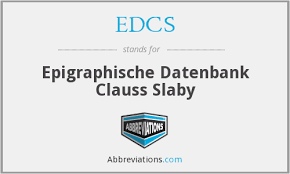CO2 (= II2 /5, 337). Funerary inscription Epitaph of Euresius
Reference CIL II2 /5, 337 | Description | Lyrics | Location | Chronology | Epigraphic edition | Translation | Apparatus | Comentary | Type of verse | Text divided into verses and metric signs | Images | Bibliography | Link to DB | Author |
CO2 (= II2 /5, 337). Funerary inscription Epitaph of Euresius
Description
- Idno filename 22/01/0098
- Type of inscription: Sepulcralis
- Material Description: White marble
- Conservation status: Broken into seven adjoining pieces
- Dimensions height/width/depth (cm): 211/60.5/9
-
Epigraphic field:
- Layout: Poor ordinatio; no line-verse coincidence, although the end of the verse is marked with a triangular interpunction after ll. 1 and 3, with a double one after 5, with hederae after 2 and 4, and a triangular one followed by two hederae after 6
- Epigraphic field dimensions hieght/weight (cm): 85/30
- Epigraphic field execution: Epigraphical field (85 x 30) surrounded by four-petalled flowers formed by interlocking circles and ovals.
- Decoration: Under the epigraphical field, one of these flowers in large proportions; on the lower part of the stone, there is a crossing lying on its side from whose ends stem two curved lines ending in the point of a lance.
- Preserved
Lyrics
- Font:Visigoda
- Letter size:3-4 cm
- Description of the letters:Irregular Visigothic script, 3/4, with numerous ligatures and cramped letters, as well as an abbreviation above the line in 10
Location
- Place of discovery: Found in 1975 on the main road from Cabra (Igabrum, Córdoba) to Doña Mencía
- Geolocation
- Conservation location: From 1983 it has been in Granada, built into the wall of a patio of the Restaurante Mirador de Morayma (c/ Pianista García Carrillo nº 2).
- Location with Modern Nomenclature España / Córdoba / Cabra
- Location with Old Nomenclature Hispania / Baetica / Astigitanus / Igabrum
Chronology
- Inscription's dating: Between year 650 and year 700
- Dating explanation: Second half of the 7th c., from the type of chrismon and the epigraphical features.
Type of verse
- Type of verse: Acentual
- Verse/line correspondence: No
- Prose/verse distinction: Si
Epigraphic edition
⊂chrismo⊃ ⊂imago mutila⊃
tibi ante la[eta an-]
⁽te⁾ lucida co⁽nt⁾ul[it]
vi⁽ta⁾ ▴ nu⁽nc⁾ tule⁽r⁽u⁾⁽n⁾t⁾
5 ⁽fa⁾⁽ta⁾ ⁽tu⁾l⁽it⁾ et m[o]⁽r⁽t⁾a⁾-
lis ⁽ca⁾⁽te⁾na ▴▴
hic cubans in⁽pe⁾-
rio [i]ussu ⁽d⁽e⁾c⁾⁽re⁾to
q(ue) divino ▴ Euresi
10 corpus{pus} pul⁽ve⁾-
⁽re⁾{e} pre{pre}sso piu(m) ▴
ter ⁽de⁾nos quo-
q(ue) et octo sup(er)-
atitos (!) annos ▴▴▴
15 ex⁽pl⁾evit vi⁽ta⁾m fu-
neris sor⁽te⁾ rap-
tus ▴▴▴
Text divided into verses and metric signs
Tibi ante la[eta, an]te lucida contul[it] vita. ~́~~~́[~]~/~́~~~́~[~]~́~
Nunc tulerunt fata, tulit et m[o]rtalis catena. ~~́~~~́~/~́~~́~~́~~~́~
Hic cubans inperio, [i]ussu decretoque divino ~~́~~~́~~/~́~~̀~~́~~~́~
Euresi corpus pulvere presso pium. ~~́~~́~||~́~~~́~~́~
5 Ter denos quoque et octo superatitos annos ~~́~~́~H/~~́~~̀~~́~~~́~
explevit vitam, funeris sorte raptus. ~~́~~́~||~́~~~́~~́~
Translation
“It fell to you to have a life that was fortunate before, that was spendid before. Now fate has taken you, and also the chain of death. Here lies resting, by decree, mandate and divine law, the pious body of Euresius, transformed into dust under the earth. Thirty and eight years he lived, snatched by the misfortune of death.”
Bibliography
Gil – González Fernández 1977, 455–461 cum im. phot. (AE 1978, 424); Sanders 1991a, 374 adn. 94; 375 adn. 97; Fontaine 1991, 163–186; Vilella 1994, 620; Stylow, II2/5, 337, cum im. phot.; Fernández Martínez – Carande, CLEB, CO13, cum im. phot, quae in linguam Hispanicam verterunt.
Apparatus
1 Q[uae] apud monogrammam Christi Schmidt per colloquium cum Stylow. – 2 la[eta an] suppl. Gil-González, la[eta] Stylow. – 3 te lucida Gil-González, et lucida Stylow. – 5 fata tulit et m[o]rta Gil-González, fata tûlit et morta- Stylow. – 6: lis catena Stylow. – 8 ri[o i]ussu Gil-González, {e}rio (!) [i]ussu Stylow.
Comentary
Carmen epigraphicum en versos acentuales derivados del hexámetro dactílico (ll. 1-6), y los restantes (ll. 7-17) del dístico elegíaco; dedicado a un aristócrata visigodo. El contenido del poema está perfectamente estructurado, de forma que los dos primeros versos dan noticia de la muerte, los dos siguientes informan del nombre y alguna cualidad del difunto, y los dos últimos detallan su edad; todo ello, como veremos, combinando los tópicos tradicionales de la poesía epigráfica (ante/nunc, tulerunt fata, sorte raptus) con alguna que otra innovación de sentido cristiano y sin paralelos epigráficos conocidos (mortalis catena, decreto divino…). En este sentido, FONTAINE 1991, 184-185 apunta que son muy difusas las referencias cristianas del epígrafe, así como en el Opilán (CLE 721), en contra de lo que era habitual en esa época en el sur de España.
En ll. 2-3, la repetición de ante propuesta por GIL reforzaría el contraste entre pasado y presente, cf. CLE 1489,1-2; laeta y lucida tienen paralelos epigráficos junto a vita, cf. CLE 1376,16 (año 529) y 1616,15. El verbo transitivo contulit parece usado aquí con el sentido de contigit, cf. CLE 1262,2. En ll. 4-5, la inversión de la habitual secuencia fata tulerunt muestra el olvido de la cantidad silábica; el sintagma mortalis catena es un unicum epigráfico de resonancias cristianas (cf. AUG., conf. 2,2,2). En l. 7, el participio cubans podría tener valor predicativo, presuponiendo est. No hay antecedentes para la ambigua secuencia pulvere presso (ll. 10-11); el adjetivo pius se emplea en su acepción cristiana (cf. PAUL. NOL., carm. 18,23, AMBR., exhort. uirg. 2,12). En ll. 12-13, la grafía superatitos por superadditos refleja, según GIL – GONZÁLEZ FERNÁNDEZ 460, una pronunciación enfática de la geminada sonora; para l. 14 explevit vitam, cf. CLE 378,2, etc.; el sintagma funeris sorte raptus indica que la muerte de Euresio se considera immatura.
Author
- Author:R. Carande Herrero, C. Fernández Martínez
- Last Update2024-02-01 13:46:21
- Autopsy date:2002
You can download this






